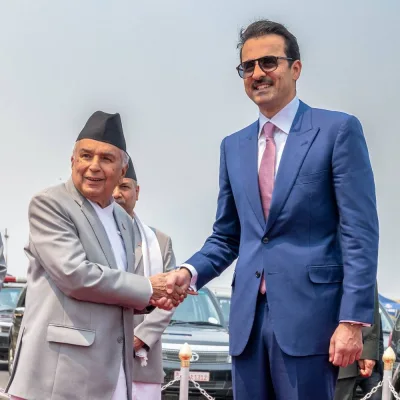IANS
The World Health Organisation (WHO) has underscored the need to develop suicide preventive measures in countries like Nepal where a national response to reduce suicide rates is still largely
non-existent.
“Suicides are preventable. For national responses to be effective, a comprehensive multi-sectoral suicide prevention strategy is needed. Communities can provide social support to vulnerable individuals and engage in follow-up care, fight stigma and support those who are bereaved by suicidal thoughts,” the WHO said in a recent report.
According to the first-ever comprehensive report on suicide prevention conducted by the WHO, 15 people kill themselves every day in Nepal, Xinhua
reported.
The report, entitled “Preventing Suicide: A Global Imperative,” lists Nepal as second among South Asian countries, only after Sri Lanka, with the highest number of suicides per capita.
Ashis, a Nepali who has spent most of his life in the streets of Kathmandu, was seen by passersby covered with blood on Saturday morning with a razor blade in his pocket.
He tried to kill himself by cutting his throat and wrists. Most people just stared at him.
“My girlfriend died yesterday, we were not married but we have a child. I decided to kill myself so that we can be together in the afterlife,” Ashis, who like many Nepali citizens, has only one name, said.
When a policeman finally arrived, Ashis was nowhere to be found. The only evidence left were patches of blood close to the sidewalk where he sat down.
After a couple of days, Ashis was found alive in Thamel, Kathmandu’s tourist hub but with severe wounds on his arms and throat, but definitely in a better psychological state.
“I feel better now but I need to apply dressing on my wounds,” he said.
Such news of people trying to kill themselves is worrisome because of their frequencies. In fact, suicide is listed as a leading cause of death among Nepalese women of reproductive age (15-49 years) in the latest maternal mortality and morbidity study conducted by the country’s department of health services in 2008/ 2009.
According to the latest data collected by the WHO, there were about 5,572 cases of suicide in Nepal in 2012 - 3,104 men and 2, 468 women. The numbers, however, could be an understatement since the incidence of suicide tends to be under-reported due to social pressures, and the fact that suicide remains illegal in Nepal.
Experts believe that the rise in suicide rates is the result of negligence and lack of infrastructures in a country where mental illness is still a social taboo.
Suicide is still considered by many as an act of cowardice or as “a permanent solution to a temporary problem.” But in a country where there is only one psychiatric hospital, those having suicidal thoughts or tendencies are often unable to contact a physician or expert who can advise them not to end their lives.
“Despite the evidence that many deaths are preventable, suicide is too often a low priority for governments and policy-makers,” the WHO said in its
latest report.
According to the National Mental Health Network Nepal, suicide has been a neglected and overlooked issue for a long time.
To revert the current trend, experts believe that the government should invest in suicide prevention activities, set up an effective system enabling community organisations to provide support and appropriate referrals to those in need of assistance, and foster a social climate where help-seeking is no longer taboo and public dialogue is
encouraged.



